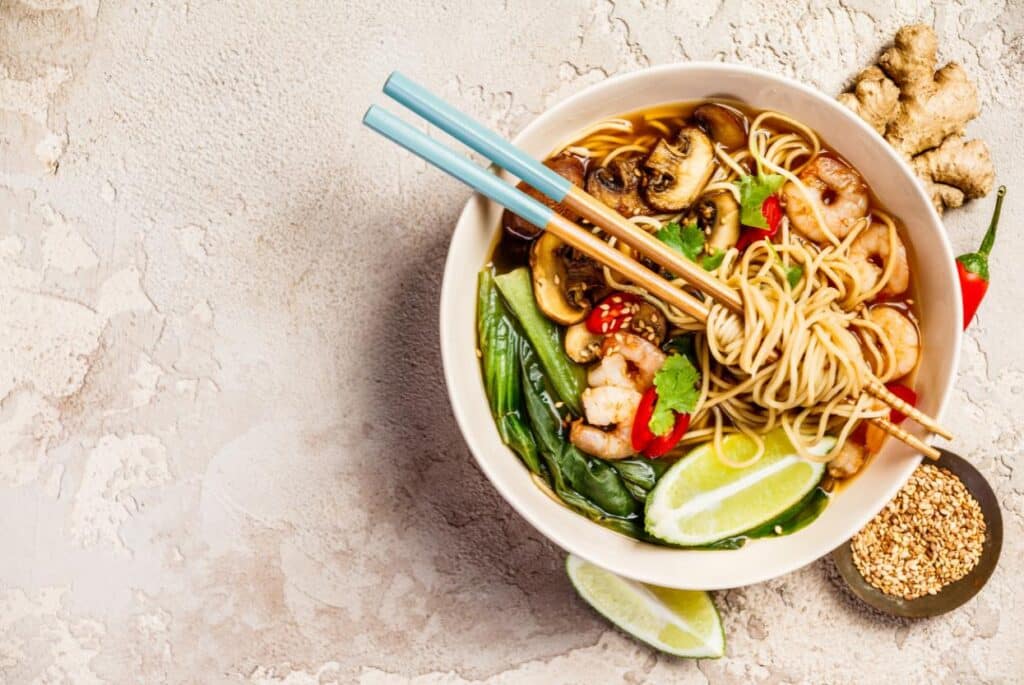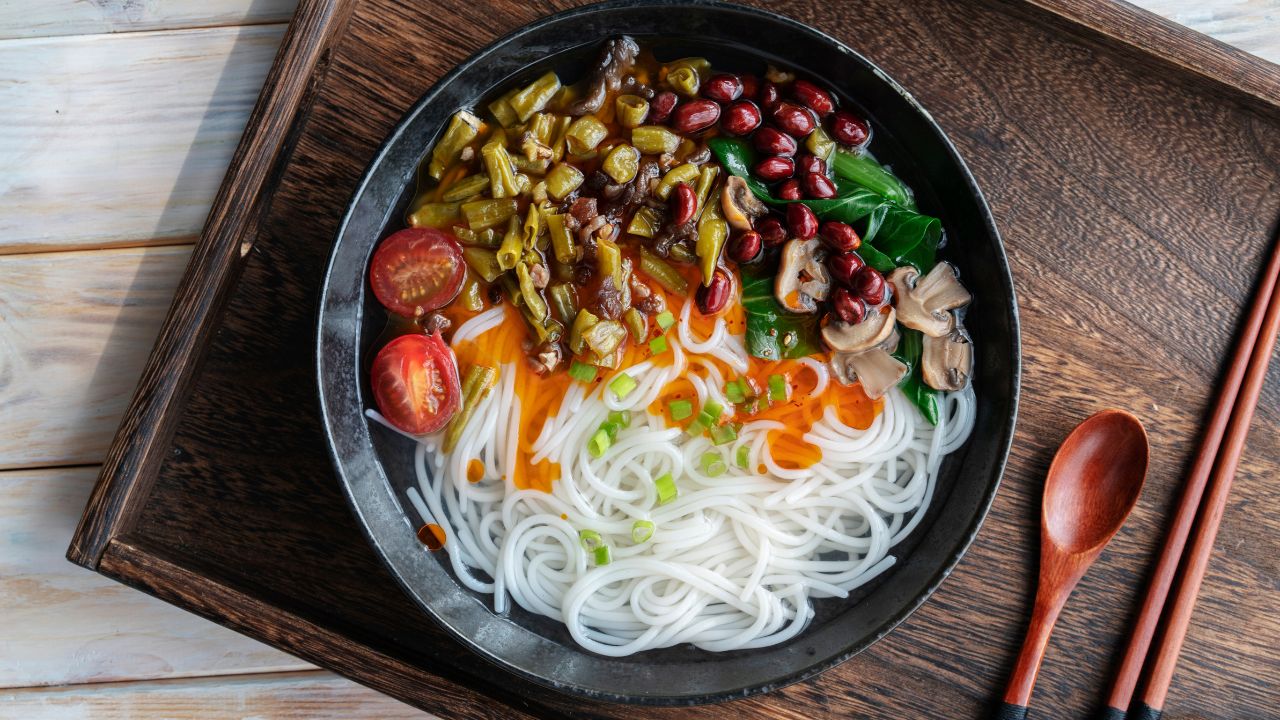Glass Noodles & Your Health: A Guide To Balanced Eating
Can something as seemingly simple as a bowl of noodles truly contribute to a healthier you? The answer, as with most dietary considerations, lies in the details, and understanding the nuances of different noodle types is crucial for making informed choices.
When considering the role of various noodles in a healthy eating plan, it's essential to remember that the foundation of any nourishing diet is balance and variety. From the delicate strands of glass noodles to the hearty chew of udon, noodles offer a diverse landscape of culinary experiences. However, not all noodles are created equal, and understanding their composition is key to making informed choices. For instance, glass noodles, also known as cellophane or bean thread noodles, are typically derived from mung bean starch. This seemingly simple ingredient can have a significant impact on their nutritional profile, and therefore, their suitability for a health-conscious diet.
Let's delve into the world of noodles and dissect their impact on our health, starting with some core fundamentals. The journey of noodles, from their origins to their impact on our well-being, is one that demands a closer look.
Consider the ubiquitous instant ramen noodle, a staple in many pantries across the globe. While undeniably convenient and often inexpensive, the nutritional realities of these products often raise concerns. A single serving of cup noodles, for example, can pack a hefty dose of sodium, ranging from a low of just under 800 mg to a staggering 1,500 mg. Regularly consuming such high levels of sodium can contribute to hypertension, a condition that can increase the risk of cardiac arrest, stroke, and kidney damage. In contrast, whole grains, like those found in certain pasta varieties, are naturally rich in fiber. This fiber aids in promoting satiety, regulating bowel movements, and maintaining a healthy weight. A diet lacking in fiber can lead to digestive issues and potentially increase the risk of developing heart disease. The differences underscore the importance of choosing wisely.
The versatility of noodles extends beyond just the basic wheat or rice varieties. There are plenty of other varieties like black bean noodles and mung bean noodles worth giving a try. Always look at the label and check for less healthy flours or refined grains. The choices we make at the grocery store and in our kitchens directly translate to our overall health and longevity.
The story of noodles doesn't end with the ingredients list. The way noodles are prepared, what they are paired with, and how often they are consumed also shape their impact. Consider the beloved Mi Goreng, an Indonesian instant noodle dish. While it provides convenience and flavor, integrating it into a health-conscious diet requires a nuanced understanding of its nutritional content. Often high in sodium and saturated fats, Mi Goreng, like many processed foods, needs to be approached with caution. Including a variety of vegetables alongside the noodles adds fiber, which can slow the absorption of sugar into the bloodstream, counteracting some of the potential negative effects. This is the crux of smart eating making conscious decisions to maximize the benefits and minimize the drawbacks.
Consider the role of egg noodles, an enriched pasta made with wheat flour and eggs. They offer some vitamins and minerals, but they also contain high levels of carbohydrates, calories, and gluten. The key lies in moderation and the toppings we choose to complement them. Opting for a lean protein source or including healthy fats helps to mitigate some of the less desirable effects. The art of healthy eating is about making informed choices and balancing the good with the not-so-good.
Similarly, lentil noodles offer a compelling alternative, as theyre made by grinding lentils into flour. Lentil noodles are slightly higher in protein, with approximately 14 grams per 2-ounce serving and also containing about 3 grams of fiber. This inherent nutritional benefit makes them a healthier choice than traditional pasta alternatives. When we are informed, we are empowered to make choices that enhance our physical and mental well-being.
The choices we make extend beyond the ingredients and cooking methods; it is also about the context within which we consume our food. Regular consumption of certain types of noodles may increase the risk for several health issues, including heart disease, high blood pressure, and obesity. Instant noodles, despite their convenience, should be consumed in moderation and not become a regular part of one's diet. Consider the whole picture when we are trying to define "healthy noodles."
A crucial aspect to consider is the sodium content. High amounts of sodium, consumed regularly, can cause a host of problems. From the potential for hypertension and cardiac arrest to kidney and liver damage and, in the worst cases, even death. Understanding and managing sodium intake is paramount for overall well-being. Always check food labels. The nutritional profile of noodles can vary significantly depending on the brand, flavor, and specific product line. This is a constant reminder of the importance of being an informed consumer.
Let's examine the question of whether instant ramen noodles are "bad" or "healthy." First, let's define exactly what makes noodles healthy or not. The idea of what constitutes healthy noodles can be broadened and explored. There are indeed many definitions of healthy noodles and it is up to us to be well-informed and make smart food choices.
Soba noodles, a traditional Japanese noodle, are a great example of a healthier alternative. Unlike ramen noodles, soba noodles are naturally gluten-free, making them a good choice for those with gluten sensitivities. Soba noodles are very versatile, and are often served in soups and noodle bowls. A 2 oz (uncooked) serving of soba noodles provides a different nutritional profile compared to other options.
In contrast, udon noodles, though delicious, tend to be thicker and chewier. Made with wheat flour, salt, and water, udon noodles are primarily carbohydrates, with small amounts of protein and low levels of fat. Udon, while tasty, may not be the best choice for everyone. It's important to compare different options when making choices about our food.
The narrative of noodles is complex. They can be quick, inexpensive, and filling, making them a staple in many diets. However, some types may be unhealthful, adding too many calories without providing much nutritional value. Remember that a diet that is lacking in fiber can contribute to health problems, so make smart food choices. There are many things that can contribute to negative health.
Many noodles, particularly instant varieties, comprise flour, salt, and palm oil. The flavoring packets often contain high levels of salt, seasoning, and monosodium glutamate (MSG). While there's variability among brands, most instant noodles share common nutritional traits. Understanding these traits is the first step to making smart choices about noodles.
Consider the option of rice noodles. The question of whether rice noodles are healthy is often asked. Exploring recipes and understanding cooking instructions makes it possible to enjoy these in a health-conscious way. Learn how to choose the healthiest noodles and pasta from a registered dietitian, comparing options such as whole wheat, white, chickpea, lentil, and instant noodles to gain tips for making them more nutritious.
The journey to making healthy food choices is ongoing, a path that demands our attention, research, and critical thinking. It's a journey of constant learning, adjustments, and improvements.
In conclusion, when selecting noodles for your diet, consider the bigger picture, including the nutritional content, preparation method, portion size, and how often you consume them. By being mindful of these factors, you can make choices that align with your health goals.
Embrace the art of mindful eating and prioritize a well-balanced diet for a healthier, happier life.


